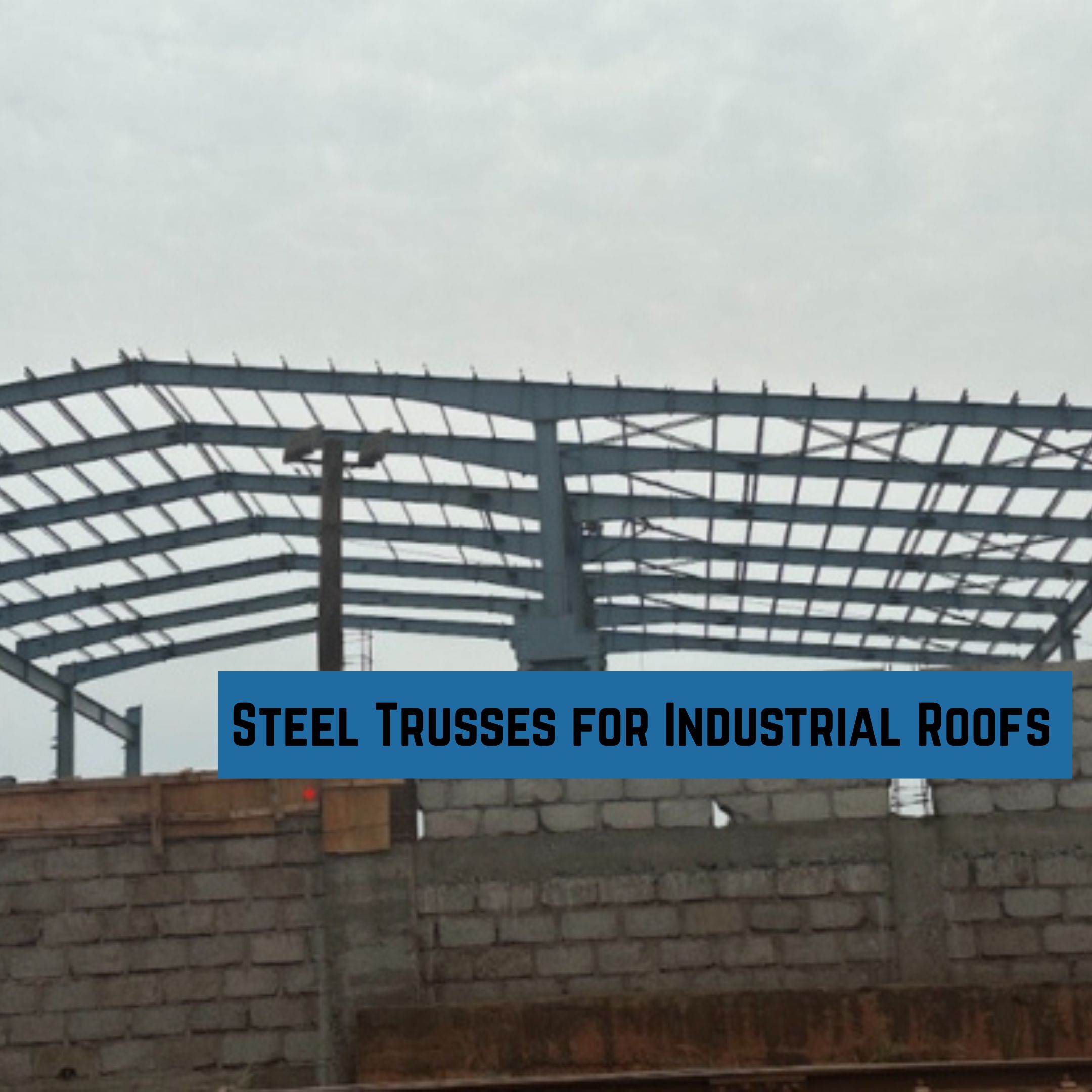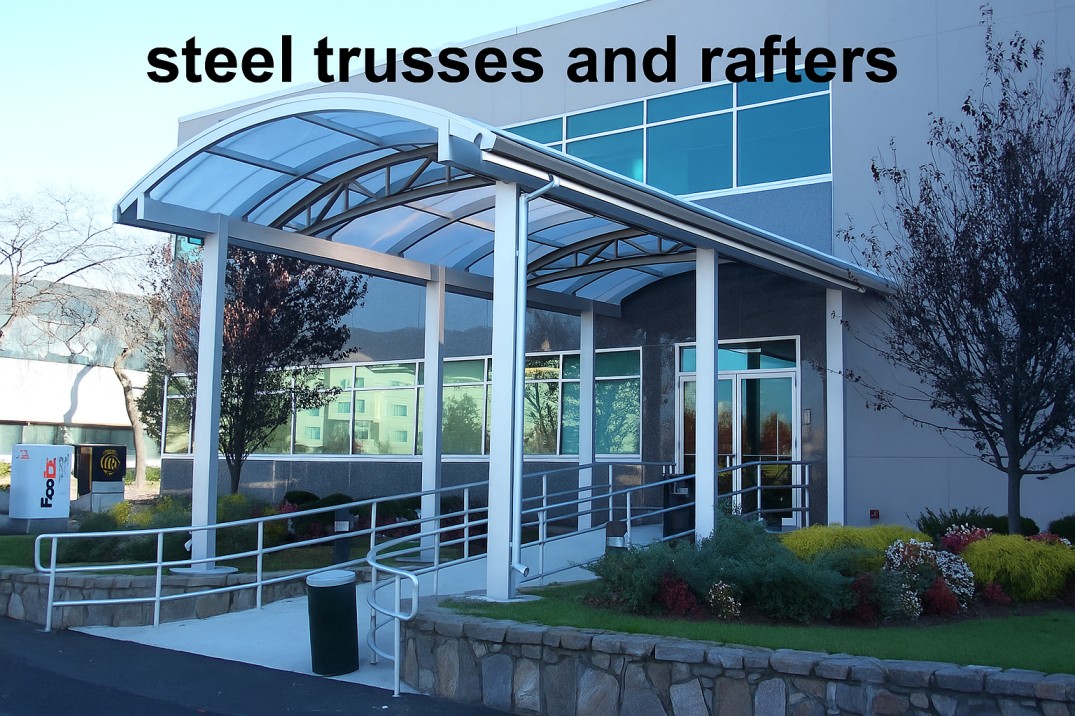Heavy-Duty Steel Trusses and Rafters for Large-Span, High-Clearance Industrial Roofs in Uganda?

Uganda is witnessing rapid industrial growth, particularly in urban areas such as Kampala, Jinja and Entebbe, where large-scale commercial and industrial projects are on the rise. One critical aspect of this growth is the construction of large-span, high-clearance industrial roofs for factories, warehouses and commercial buildings. In these projects, heavy-duty steel trusses and rafters are indispensable for ensuring the structural integrity, strength and long-term durability of the buildings.
Heavy-duty steel structures are engineered to handle heavy loads while offering optimal stability across vast spans. For industrial applications in Uganda, where operational efficiency and cost-effectiveness are paramount, pre-engineered heavy steel buildings – provide the ideal solution. This article will explore the role of steel structures in industrial roofs, focusing on the importance of heavy-duty steel trusses and rafters for large-span, high-clearance roofs in Uganda.
Structural Fabrication of Steel Rafters for High-Clearance Factory Roofing
In Uganda, the demand for large industrial sheds, factories and warehouses has prompted the need for heavy-duty steel structures that can accommodate high ceilings and extensive space. These buildings often require high-clearance roofs to allow for the efficient operation of machinery, storage of goods and movement of large equipment.
High-Clearance Roof Requirements for Factories
High-clearance roofs are particularly important for industrial settings where machinery, assembly lines and heavy-duty operations take place. For example, factories in Uganda’s industrial sectors, like those in Kampala’s Namanve Industrial Park, often need roofs that can support large spans without the need for internal supports. Steel rafters and steel trusses are essential for creating these expansive roof systems, as they provide the strength needed to span wide distances while maintaining clearance for operations.
Fabrication and Design of Steel Rafters
The fabrication of steel rafters begins with a detailed design phase, where engineers determine the specific load requirements for each building. Steel structure buildings in Uganda must be designed to withstand local weather conditions, such as high winds or heavy rain, while also accommodating the needs of the industry, whether it is manufacturing, storage or distribution.
The heavy duty structure work involved in designing these rafters ensures that they can bear substantial loads over long spans. In Uganda, a typical steel structure for high-clearance factory roofing may incorporate I-beam rafters, built-up section rafters or portal frame rafters for added support. These systems are engineered to provide maximum clearance without compromising on strength or safety.
Customizing Steel Rafters for Industrial Use
Each factory or warehouse will have unique requirements based on the type of operations conducted inside. For example, steel structure buildings used for agricultural processing may require roof designs that allow for ventilation or accommodate specific equipment. Similarly, steel rafters in a factory producing large vehicles or machinery need to support heavy equipment hanging from the rafters or stored in elevated sections. Customization is a key benefit of using heavy-duty steel structures, as they can be tailored to meet specific industrial needs.
Why Heavy-Duty Steel Trusses are Ideal for Large-Span Industrial Sheds?
When it comes to building large-span, high-clearance roofs in industrial environments, are the go-to solution due to their strength, efficiency and versatility. In Uganda, large industrial sheds are often designed to hold significant amounts of equipment or materials and steel trusses are perfect for these large structures. Here are the key reasons why steel trusses are preferred for large-span roofs:
Load-Bearing Capacity
Steel’s strength allows steel trusses to span large distances without the need for additional support beams or columns in the middle of the building. This is particularly important for industries in Uganda, such as manufacturing or warehousing, where large open spaces are needed for the movement of materials, machinery and goods. Heavy-duty steel trusses can carry significant loads, making them ideal for use in large-span industrial roof systems.
Cost-Effectiveness
Pre-engineered heavy steel buildings, which incorporate steel trusses, are cost-effective for large industrial projects. Steel structure buildings reduce the amount of material needed for construction because steel is strong enough to cover large spans with fewer supports. This translates into lower material costs and faster construction times, allowing industrial projects in Uganda to be completed within budget and on time.
Durability and Longevity
Steel is naturally resistant to environmental conditions such as rain, high humidity and temperature fluctuations, which is a critical consideration in Uganda’s diverse climate. For example, steel structures in Uganda need to withstand high temperatures in areas like Arua and Mbale, as well as the wet conditions of areas such as Lake Victoria near Entebbe. Steel trusses provide a long-lasting solution, reducing maintenance costs and ensuring the building’s structural integrity for years.
Design Flexibility
The versatility of steel trusses makes them an ideal choice for various architectural and structural designs. Multi-story steel structures and large-span roofs can be tailored with different configurations of steel trusses to accommodate the specific needs of the building’s use. For example, pre-engineered heavy steel buildings may use triangular, lattice or parallel chord steel trusses depending on the load requirements, aesthetic preferences and space needs.
Quick Installation
The prefabrication of steel trusses allows for quick and easy assembly on-site, reducing labor costs and accelerating project timelines. In Uganda, where industrial construction is expanding rapidly, this speed is essential. Prefabricated steel structure buildings can be erected in a fraction of the time compared to traditional construction methods, providing a quicker return on investment for businesses.

Applications of Heavy-Duty Steel Trusses and Rafters in Uganda
Heavy-duty steel trusses and rafters are used in various applications across Uganda’s expanding industrial sectors. These include:
Industrial Warehouses and Storage Facilities
Warehouses are a cornerstone of Uganda’s growing commercial infrastructure and steel trusses are perfect for large storage spaces. Whether used to store agricultural products, manufactured goods or raw materials, steel structure buildings provide the durability and flexibility required for these large spaces.
Factories and Manufacturing Plants
For factories that require high ceilings to accommodate large machinery or assembly lines, heavy-duty steel rafters and steel trusses ensure that the structure can support the heavy loads while maintaining optimal operational space. In places, industrial buildings rely on steel structures for their strength and cost-effectiveness.
Hangars and Aviation Facilities
In Uganda, where the aviation sector is growing, airports and aviation facilities often require high-clearance roofs to accommodate aircraft and other large equipment. Steel trusses offer a reliable solution for these large structures, providing the necessary clearance and load-bearing capacity.
Stadiums and Auditoriums
Large public venues like stadiums and auditoriums in Uganda benefit from steel trusses due to their ability to span large areas without internal supports, which is essential for ensuring unobstructed views and seating arrangements. These structures provide a robust framework for roof systems that need to cover vast open spaces.
Conclusion
The role of heavy-duty steel trusses and rafters in large-span, high-clearance industrial roofs is pivotal to the ongoing development of infrastructure in Uganda. From steel structure buildings in industrial parks to warehouses, factories and airports, steel structures are the backbone of modern construction projects.
Pre-engineered heavy steel buildings, particularly those using steel trusses and rafters, offer cost-effective, durable and efficient solutions for large industrial spaces. The demand for these structures will only continue to grow as Uganda’s industrial landscape expands, with more businesses requiring reliable and robust roofing systems to support their operations. By investing in high-performance steel structures, Uganda can ensure that its infrastructure keeps pace with its growing economic and industrial needs.
FAQs About Steel Trusses and Rafters

Founder & CEO
Mukesh Patel is the Founder & CEO of Build Matt ltd, specializing in Pre-Engineered Buildings (PEB) and general steel fabrication. With advanced technology, modern machinery, and a skilled workforce, he delivers efficient and high-quality solutions across East and Central Africa, including Uganda, Kenya, Tanzania, Congo, South Sudan, Rwanda, and Burundi.
- CNC Plasma Cut Decorative Metal Panels: Revolutionizing Interior and Exterior Design
- Combining Roof Vents and Translucent Sheets for Better Airflow and Natural Lighting in Uganda Cities
- Top Design Trends in Steel Staircases for Modern Ugandan Buildings
- Steel Railings & Balustrades for Uganda Cities
- Modern Steel Silos & Hoppers : Transforming Grain Storage Efficiency in Uganda






